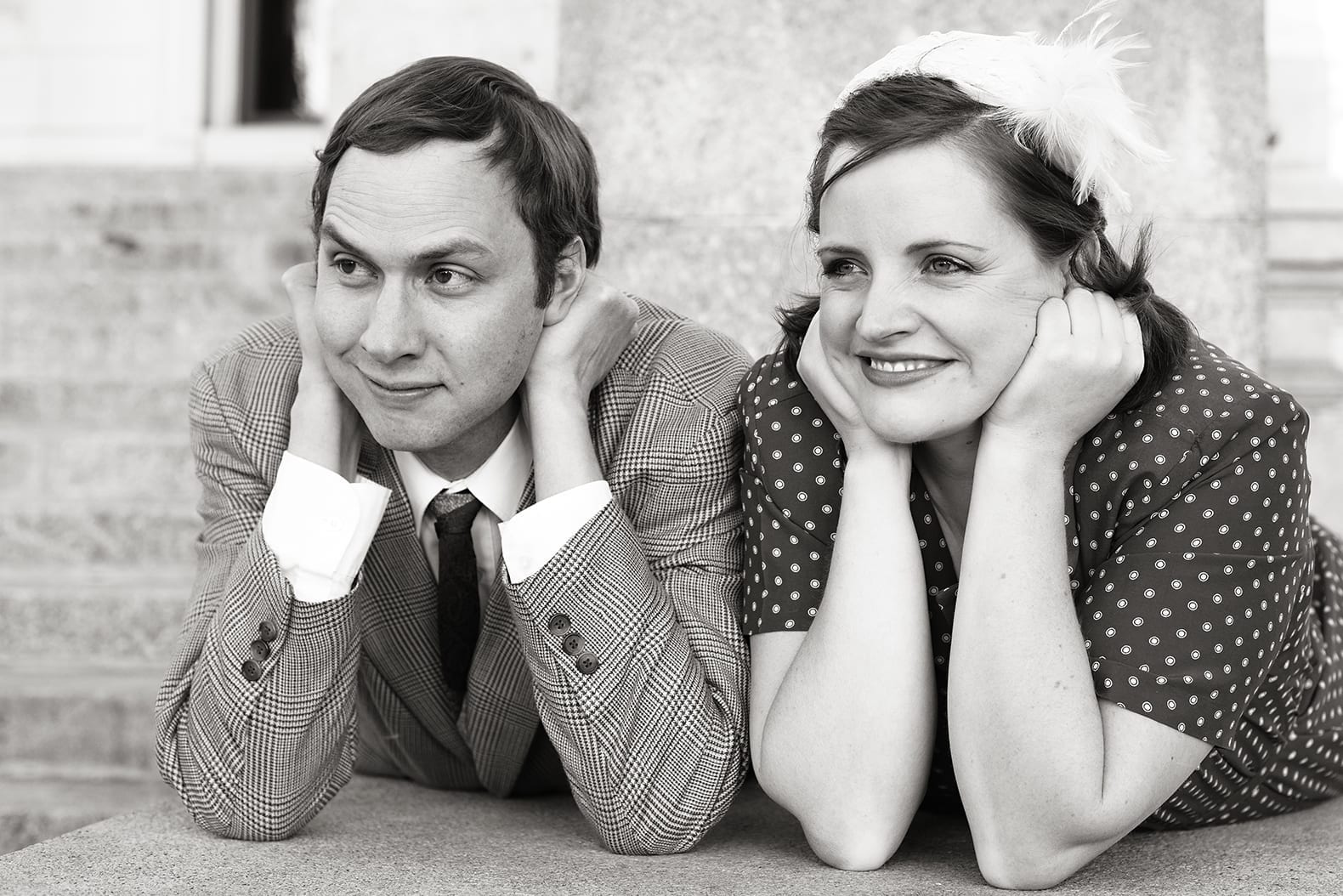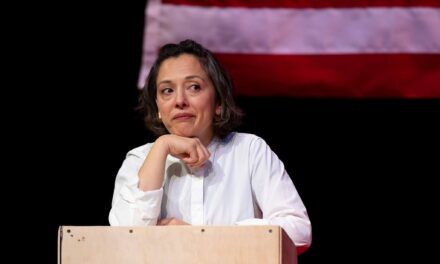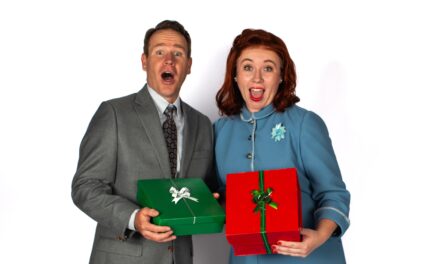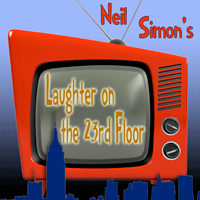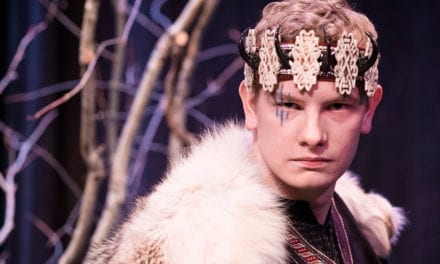PROVO — How would you like to spend an evening with Jimmy Stewart, Margaret Sullavan, Henry Fonda, Cary Grant, Katharine Hepburn, Lucille Ball and Ginger Rogers? All together on one stage? Well you might just be in luck with Mahonri Stewart’s original play, Jimmy Stewart Goes to Hollywood, which is a biographical exploration of the life of actor and entertainer Jimmy Stewart and his journey to stardom. It begins with Stewart as a young boy and continues through his triumphs on stage and film, his service in the military, his receiving the academy award, and concluding with his wedding to Gloria Hatrick McLean. Real life is often more entertaining than fiction, and Jimmy Stewart—certainly one of the greatest actors of all time—whose life was worth examining. Thanks to Stewart’s script, I learned what a quality person Jimmy Stewart was off the screen in his personal life.
Stewart did a nice job of creating an engaging story and highlighting many of the most memorable moments of Jimmy Stewart’s life. He found both the humor and the drama in historical events, and I found myself engaged from beginning to end thanks to his well-crafted script. Stewart’s natural and conversational writing style accentuated many of these great moments in Stewart’s life. He also brought dimension to many of the characters he created, which made for interesting scenes and moments. It was very evident that Stewart had done a lot of research in order to create such a detailed story. But I would have liked to see a bit greater development in Jimmy Stewart’s courtship and marriage to Gloria Hatrick McLean, as that was an important yet missing part of the story. The script could have also benefited by heightening some of the more dramatic moments in the characters’ lives to create greater shaping and variety to the storyline.
The director, J. Scott Bronson, who also played several parts in the play including Jimmy’s father Alexander Stewart, didn’t quite make Stewart’s script reach its full potential. And often happens when a director takes on a role in the show, the overall production suffered. The concept of having all the performers seated onstage and stepping into various roles throughout the show, sort of a “show within a show” concept, largely didn’t work. It was extremely confusing to follow which actors were playing which characters, as they would often step into a new role in a scene immediately following the one they were just in, with virtually no costume, physicality, or voice changes to distinguish among characters. Often the movement from supporting characters would pull focus from the main action, especially when an actor not in a scene at all. Other times an actor would move during a scene to go and change costume or get ready to enter for the next scene, which would also be distracting. Moreover, many of the scenes were too similar in terms of energy, tone, pace, and volume, which made the climax ambiguous and the dramatic and comedic moments not as clear as they could have been.
William McAllister delivered a fantastic performance as the title character Jimmy Stewart. McAllister resemblances Stewart, and it was obvious that he had spent a great deal of time researching Stewart in order to execute such a refined performance. His mannerisms, voice inflection, and overall creation of the character were worth the price of a ticket alone. McAllister was engaging to watch in every scene and gave a very believable and near flawless performance. McCallister indeed set a high standard with his detailed and nuanced performance that the rest of the cast could not quite attain. The cast included an ensemble of 9 additional actors who played a variety of roles throughout the production. This convention did not work, mainly due to the weakness of the characters that the ensemble of actors created. More dramatic character changes were needed to distinguish their various parts one from another. It muddied the story line during many scenes as I tried to figure out who was who, and the lack of character development made it impossible to notice when a transition had taken place by an actor to a new character. However, one of the ensemble members was better at these transitions, Adam Argyle as Robert Perry/Louis B. Mayer/Crewmember found ways to distinguish his characters one from another by changing accents, movements, and costume to create three distinct characters, which was largely missing by the rest of the cast.
Leading lady Kate Forsythe as Margaret Sullavan was not as believable as McAllister. Sullavan was a film icon of elegance and grace and was known for being an outspoken diva in her interactions off the camera. However, Forsyth played Sullavan with a reserved and unassuming demeanor, both in her physicality and line delivery. This characterization was the exact opposite of the film actress and dialogue in the script, which weakened many of her scenes. I also had trouble believing Rebecca Minson as Katherine Hepburn, or Jessica Myer as Ginger Rogers. It’s challenging to portray real celebrities because of audience expectation for how these people should look and act. Unfortunately, Forsythe, Minson, and Myer were not up to the challenge, and I wish that Bronson could have helped these performers as well as most of the supporting cast refine their performances by incorporating the nuances of these film icons—as McCallister was so successful in doing as Jimmy Stewart.
Over all, Stewart created a strong script in Jimmy Stewart Goes to Hollywood that is worth exploring, and McCallister’s performance as Jimmy Stewart alone made the evening worthwhile and enjoyable. The production was both entertaining and educational as the amazing life of Jimmy Stewart, both on and off the camera, unfolded over the course of the evening. However, the lacking direction and unseasoned supporting actors kept the production from reaching its full potential.

